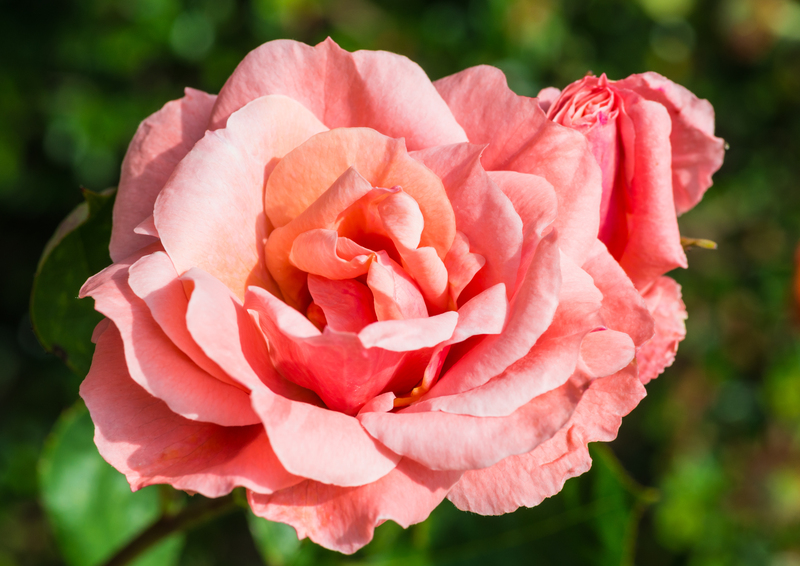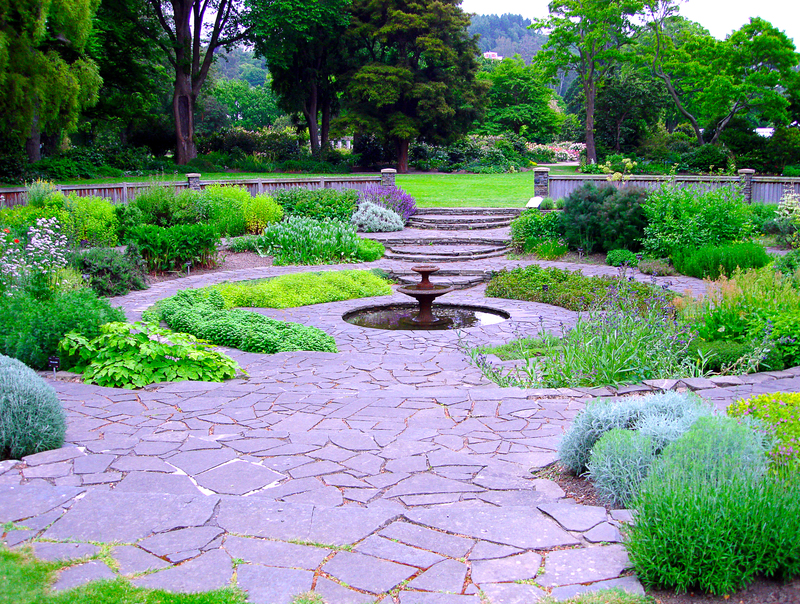Scale garden design with vertical gardening
Posted on 18/06/2025
Scale Garden Design with Vertical Gardening: Maximizing Space and Beauty
Are you dreaming of a lush green sanctuary in a limited space? Scale garden design with vertical gardening is revolutionizing the way gardeners, homeowners, and designers think about outdoor and even indoor spaces. Whether you have a small urban balcony, a spacious backyard, or just a blank wall that could use some life, mastering the art of vertical gardening can drastically improve your environment. In this comprehensive guide, we'll cover everything you need to know about scaled vertical garden designs, their benefits, implementation tips, plant choices, and much more.

What Is Vertical Gardening?
Vertical gardening involves growing plants upwards using structures such as walls, trellises, cages, and towers rather than allowing them to sprawl across the ground. This technique is perfect for maximizing available space, especially in urban environments or for those with limited gardening areas. Vertical gardening can be implemented both indoors and outdoors, making it a flexible and innovative solution for anyone looking to scale up their garden design.
Why Scale Garden Design with Vertical Elements?
- Space Optimization: Utilize unused vertical spaces and transform them into productive green areas.
- Aesthetic Appeal: Create stunning living walls, hanging gardens, and vibrant installations that add depth and interest to your space.
- Healthier Plants: Improved air circulation around vertically grown plants can lead to fewer diseases and pests.
- Convenience: Easier planting, pruning, and harvesting with accessible vertical arrangements.
- Environmental Benefits: Vertical gardens can act as natural insulation, provide shade, and improve air quality.
The Fundamentals of Scaled Vertical Garden Design
Elevating your garden design through vertical gardening boils down to combining functionality with creativity. Here are crucial factors to consider:
1. Assess Your Space
- Available Walls or Fences: Identify walls, fences, or structures that receive ample sunlight and are suitable for supporting plant life.
- Structural Support: Ensure the chosen surfaces are sturdy enough to bear the weight of containers, soil, and mature plants.
- Accessibility: Position vertical elements where you can water, prune, and maintain them easily.
2. Choose Your Vertical Gardening System
There are multiple ways to scale your garden design vertically. Each system comes with unique advantages:
- Trellises and Lattices: Perfect for vining plants like peas, beans, and climbing roses. Wood, metal, or bamboo trellises can be fixed to walls or stand alone.
- Hanging Planters: Use baskets, pockets, or pots suspended from beams or ceilings to add layers of greenery above eye level.
- Living Walls (Green Walls): Modular panels filled with soil and plants transform a plain wall into a blooming masterpiece.
- Pocket Planters or Fabric Walls: These engineered fabrics have pockets to hold soil and plants, ideal for herbs and small ornamentals.
- Pallet Gardens: Upcycled pallets make excellent vertical beds for herbs, succulents, and leafy greens.
- Tower Gardens & Stacked Planters: These free-standing systems allow multiple layers of plants to flourish in a compact footprint.
3. Select the Right Plants
Not every plant is suitable for upright growth. Prioritize species that naturally climb, cascade, or thrive in smaller soil volumes.
- Edibles: Strawberries, lettuce, spinach, peas, tomatoes, pole beans, herbs (basil, oregano, thyme).
- Ornamentals: Ferns, philodendrons, pothos, petunias, nasturtiums, ivies.
- Succulents: Sempervivum, echeveria, sedum, crassula are water-wise and thrive in vertical arrangements.
Bountiful Benefits of Vertical Gardening in Scale Garden Design
Maximize Limited Spaces
Vertical gardening is the ultimate solution for those who lack expansive ground space but still crave the serenity of greenery. Balconies, courtyards, and rooftops can be transformed into productive gardens with vertical solutions.
Improve Microclimate and Insulation
Living walls act as natural insulation, helping to regulate indoor and outdoor temperatures while also providing a sound buffer. This creates a more comfortable microclimate for both plants and people.
Enhanced Aesthetics and Privacy
Vertical gardens serve as dynamic, living pieces of art that bring texture, color, and movement. They're perfect for adding privacy to patios or creating green "rooms" within a larger landscape.
Boost Biodiversity and Pollinator Habitats
By providing habitats for insects, birds, and crucial pollinators, vertical gardening increases the ecological value of your surroundings.
Easy Maintenance and Healthier Plants
With improved air circulation, plants grown vertically often experience fewer problems with fungal diseases and pests. Maintenance activities like watering, pruning, and harvesting become more ergonomic.
Step-by-Step Guide to Implementing Vertical Garden Design
Step 1: Planning Your Scaled Vertical Garden
- Site Assessment: Observe sunlight patterns, wind exposure, and moisture/bathing needs.
- Size and Scale: Determine how much vertical and horizontal space you have, then design a vertical system that fits seamlessly.
- Style and Budget: Choose a vertical gardening method that aligns with your taste and resources.
Step 2: Building the Vertical Structure
Depending on your chosen system, install trellises, attach pocket planters, or set up a hydroponic wall. Make sure all structures are secure and can support mature plants.
Step 3: Soil and Irrigation Setup
- Soil Mix: Select a lightweight, well-draining potting mix enriched for the types of plants you're growing.
- Irrigation: Automated drip irrigation is best for living walls and large pocket planters, ensuring even moisture.
- Watering Needs: Containers dry out faster; adjust watering to maintain consistent soil moisture.
Step 4: Planting and Arranging
Place trailing or cascading plants towards the top, upright plants in the middle, and bushy or mounding varieties at the base for a lush effect. Mix textures, heights, and colors for visual interest and biodiversity.
Step 5: Maintenance and Growth Management
- Fertilize periodically to compensate for nutrients leached out in smaller soil volumes.
- Prune and deadhead regularly to encourage growth and prevent overcrowding.
- Monitor for pests and diseases, taking prompt action when issues arise.
- Rotate or replace plants seasonally for year-round interest.
Creative Ideas for Scaling Garden Design Vertically
Let your imagination run wild as you reimagine vertical garden layouts. Here are some inspiring ideas to help you get started:
- Herb Curtain: Hang a series of small planters along a sunny kitchen window, filling them with your favorite culinary herbs.
- Succulent Wall Art: Insert a mosaic of semi-succulent species into a shallow frame for a modern, low-maintenance piece.
- Edible Fence: Train climbing beans, cucumbers, or espaliered fruit trees along a fence for beauty and harvest.
- Hanging Basket Tiers: Stack wire baskets or metal rings laden with trailing annuals or strawberries.
- Gutter Gardens: Mount old gutters horizontally on a fence and fill with greens or flowers.
- DIY Pallet Garden: Upcycle shipping pallets into vertical beds for lettuce, pansies, or herbs.
- Living Privacy Screens: Create mobile green dividers with plant-covered lattice screens.
Best Plants for Large-Scale Vertical Gardening
Choosing the right plants is crucial for successful scaling of your vertical garden designs. Here's a quick list of the best candidates:
- Climbers: Passionflower, clematis, climbing roses, wisteria, honeysuckle.
- Edibles: Pole beans, peas, cherry tomatoes, cucumbers, kale, strawberries.
- Foliage Plants: Ferns, philodendrons, spider plants, ivies.
- Flowers: Nasturtiums, petunias, begonias, fuchsias, lobelia.
- Succulents: Sedum, echeveria, sempervivum, crassula.
- Herbs: Basil, oregano, marjoram, thyme, chives, mint (in containers to control spread).
Common Mistakes in Vertical Scale Garden Design (and How to Avoid Them)
- Overloading Structures: Don't underestimate the combined weight of soil, water, and plants. Use robust supports and regularly check for structural integrity.
- Poor Drainage: Ensure all planters have excellent drainage to prevent root rot.
- Ignoring Sunlight Needs: Match plant selections to the amount of natural light available on your vertical surface.
- Inadequate Watering: Install drip irrigation, especially for large-scale or living wall projects, to prevent under or overwatering.
- Monoculture: Mix up plant types and textures to reduce disease risk and enhance aesthetic appeal.

Conclusion: Transform Your Space with Scaled Vertical Garden Design
Embracing vertical gardening techniques is the most effective way to scale your garden design, especially when working with limited space. By thinking vertically and creatively, you can maximize the productivity, beauty, and biodiversity of any setting--whether it's an apartment balcony, a backyard fence, or a vast urban wall. Remember, successful vertical gardens start with a strong structure, smart plant choices, good soil, and proper irrigation.
As you begin your journey into scaled vertical garden design, don't hesitate to experiment with new plants and layouts. Let your unique environment and personal style guide your choices, and watch as your garden reaches new heights--literally!
Frequently Asked Questions on Scaling Garden Design with Vertical Gardening
Q: Can I use vertical gardening for edible plants?
A: Absolutely! Many edibles like strawberries, tomatoes, peas, beans, and herbs are ideal for vertical setups. Just make sure they receive plenty of sunlight and water.
Q: What is the best way to water a large-scale vertical garden?
A: Drip irrigation systems are the most efficient. They deliver water right to the roots and reduce waste. For smaller projects, regular hand watering will suffice.
Q: Do I need special soil for vertical gardens?
A: Use lightweight, high-quality potting mixes with good drainage. Avoid garden soil, as it's too heavy and can compact easily in containers.
Q: Can I create vertical gardens indoors?
A: Yes! Indoor vertical gardens are becoming increasingly popular. Ensure you use houseplants suited to your indoor light and humidity conditions.
Q: How do I prevent damage to my wall or fence?
A: Use waterproof barriers behind your vertical structures and choose modular systems that direct water away from surfaces to prevent rot or staining.
Ready to scale your garden design with vertical gardening? With planning and creativity, you can turn even the smallest of spaces into a thriving green paradise--one wall, trellis, or pocket at a time!



